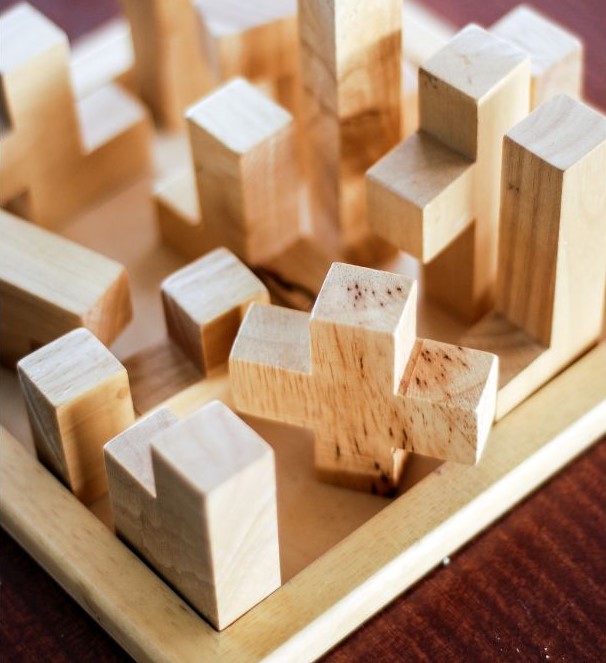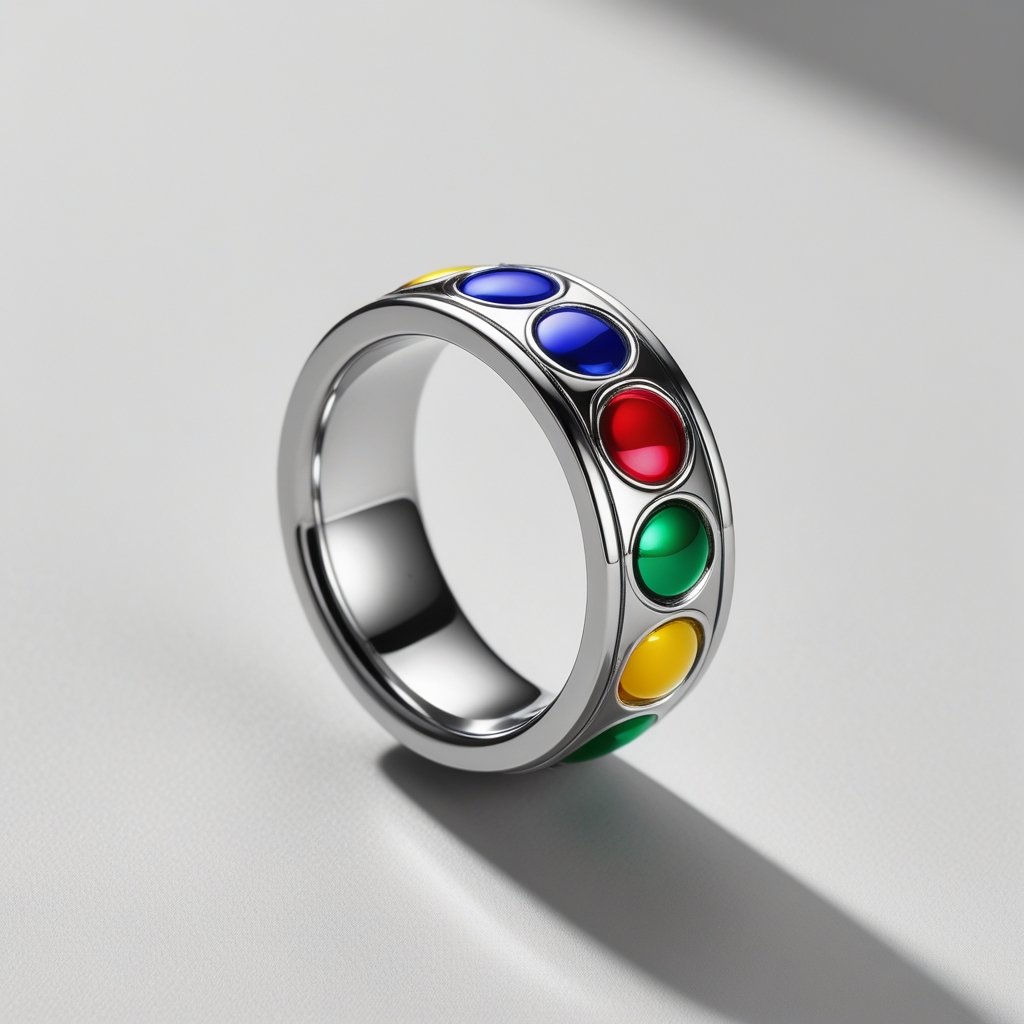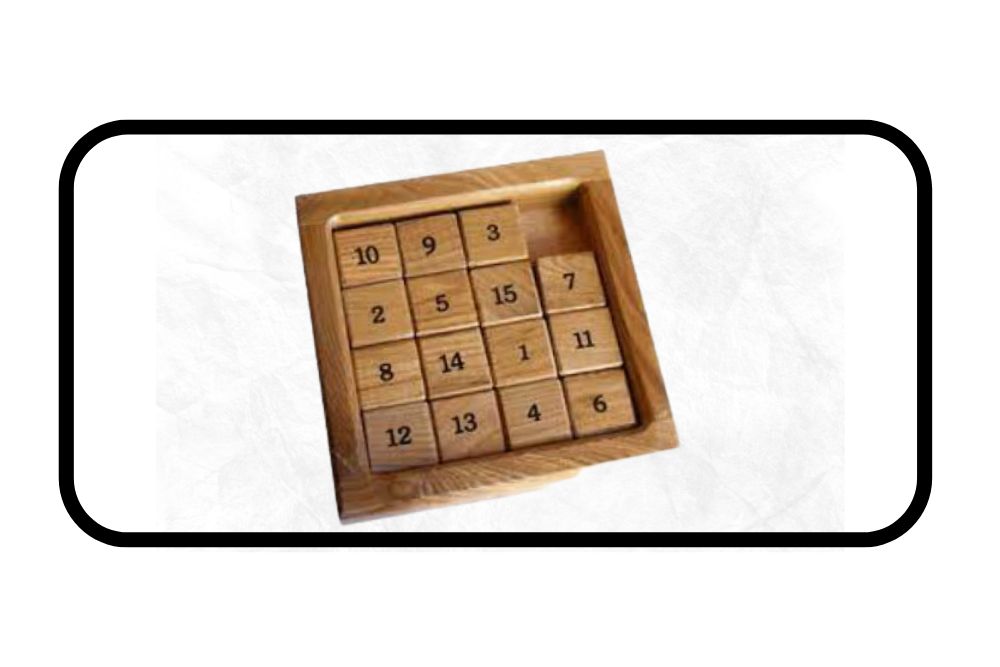A world of intrigue and challenge awaits those who venture into the realm of Burr Puzzles.
These three-dimensional wooden or metal brain teasers have long been a source of fascination for puzzle enthusiasts and casual hobbyists alike since they are great at testing one’s spatial reasoning and problem-solving abilities.
Models and designs can vary – from simple interlocking pieces to complex configurations, Burr Puzzles have something for everyone.
The Ultimate Guide to a Burr Puzzle aims to provide both beginners and experienced puzzlers with everything needed to approach and conquer these captivating contraptions.
Inside lies a wealth of information, including the history of the Burr Puzzle, various classifications, and their individual characteristics.
Readers will also find useful tips, techniques, and resources to escalate their problem-solving skills, enhancing their overall experience with this exciting pastime.
Whether a newcomer to the world of puzzles or a seasoned solver looking to broaden their collection, tackling Burr Puzzles is both rewarding and engaging.
The Ultimate Guide to a Burr Puzzle is a valuable resource and trusted companion on this journey of discovery and mastery, taking the mystery out of these intriguing enigmas and providing the tools needed to unlock their secrets.
History of Burr Puzzles
Burr puzzles have their roots in ancient China, where they were known as 三絲巧, meaning “three clever pieces.” Craftsmen would create these intricate and creative puzzles using a combination of wood, metal or other materials.
However, the popularity of these puzzles didn’t take off significantly until they reached Europe in the 18th century.
English puzzle-maker John Spilsbury is credited with bringing burr puzzles to Europe in the 1760s. Spilsbury utilized European woodcraft techniques to create puzzles with greater complexity and appeal.
These early puzzles were often used as educational tools, teaching geography or mathematics through assembly and disassembly.
Over time, burr puzzles evolved to include a variety of formats and designs. In the mid-19th century, French puzzle maker Edouard Lucas expanded on the foundational burr puzzle concept by creating the Devil’s Hoof, an arrangement requiring 36 moves for successful disassembly.
Throughout the 20th century, notable puzzle designers such as the Yoshigahara brothers in Japan and Bill Cutler in the United States further expanded the field of burr puzzle complexity, with puzzles like the Rota and Bedlam Cube serving as enduring examples of creative problem-solving.
Understanding Burr Puzzles
Burr puzzles, also known as interlocking puzzles, are intriguing three-dimensional wooden or metal puzzles that consist of notched pieces fitting together in a precise manner. Known for their beautiful designs and challenging solutions, burr puzzles have attracted countless enthusiasts around the world.
Basic Components
All burr puzzles are constructed from a series of notched parts that interlock to form a stable structure. These parts are typically:
- Linear pieces: Straight parts with notches along their length.
- Angular pieces: Parts that have one or more bends or angles, with notches located at the bends.
The number and shape of the pieces vary, depending on the complexity of the puzzle. However, the fundamental principles of a burr puzzle remain the same – the pieces must interlock in such a way that no external force is required to maintain their stability.
Types of Burr Puzzles
Burr puzzles come in different shapes, sizes and styles, but they can generally be categorized into two main types:
- Solid burrs: These puzzles form a solid three-dimensional shape, such as a cube or sphere, when assembled. They typically consist of six to twelve pieces, with each piece contributing to the structural integrity of the completed puzzle.
- Cage burrs: Also known as framed burrs, these puzzles use an outer frame to contain the other pieces, which interlock within the frame. The frame allows for more freedom in the puzzle design, often resulting in more complex solutions.
Regardless of their style, all burr puzzles share the key attribute of interlocking pieces that form a stable structure when correctly assembled.
Solving a burr puzzle involves disassembling the interlocked pieces and then reassembling them in the correct order, enhancing the spatial reasoning and problem-solving skills of those who engage with these alluring creations.
Solving Techniques
In this section, we will explore various techniques to solve a Burr Puzzle, focusing on two main approaches: Systematic Approaches and Trial and Error.
Systematic Approaches
One effective way to tackle a Burr Puzzle is by employing a systematic approach, which involves breaking down the puzzle into small, manageable steps. Here are some methods to consider:
- Layer-by-Layer: Focus on assembling each layer of the puzzle individually, starting from the base and working upwards.
- Piece-by-Piece: Assemble the puzzle by concentrating on individual pieces, examining how they fit together and determining their correct positions within the structure.
- Color Coordination: If the puzzle has pieces with distinct colors or markings, use these visual clues to guide the assembly process.
Trial and Error
Another common approach to solving Burr Puzzles is through trial and error. While this method can be more time-consuming, it can also be a valuable learning experience. Here are some tips for using trial and error effectively:
- Take Notes: Documenting each attempted arrangement can help identify patterns and eliminate unsuccessful configurations.
- Stay Organized: Keep all pieces laid out in a clear and orderly manner to streamline the trial and error process.
- Embrace the Challenge: Don’t be discouraged by failed attempts. Learning from mistakes is an integral part of this method, and perseverance will be rewarded in the end.
Implementing these techniques can help make the process of solving a Burr Puzzle more enjoyable and efficient. Remember to stay patient and persistent, and most importantly, have fun!

Assembly Tips
Assembling a Burr Puzzle can be a rewarding and challenging task. In this section, we will discuss some tips and tricks to make the assembling process easier and more enjoyable.
Useful Tools
Having the right tools on hand can be the key to successfully assembling a Burr Puzzle. Here is a list of tools that may come in handy:
- Tweezers: They can be used to maneuver small or hard-to-reach puzzle pieces into the right position.
- Magnifying glass: A magnifying glass can help you see fine details and ensure that all pieces are fitting together correctly.
- Soft cloth or pad: A soft surface can protect the puzzle pieces from getting scratched or damaged while working on the assembly.
Preventing Common Mistakes
While assembling a Burr Puzzle, some errors are more common than others. Knowing these can help you avoid unnecessary frustration. Some of these mistakes to watch out for include:
| Mistake | How to prevent |
|---|---|
| Forcing pieces together | Ensure that you’re not applying too much pressure while joining pieces. If they don’t fit, re-examine the alignment before trying again. |
| Misaligned pieces | Verify that all pieces are correctly oriented before joining them. It’s easier to correct the orientation before they’re joined than after. |
| Ignoring the puzzle’s sequence | Pay close attention to the recommended assembly sequence, as it may provide clues on how pieces fit together. |
Remember, patience is key when working with Burr Puzzles. By following these tips and being mindful of potential mistakes, you’ll be well on your way to mastering the art of Burr Puzzle assembly.
Popular Burr Puzzle Variations
Burr puzzles, also known as interlocking puzzles, come in a wide variety of shapes and designs. Although they all share the same basic concept of interlocking wooden pieces, there are several popular variations that aficionados enjoy:

- Diagonal Burr: A diagonal burr includes diagonal cuts in its wooden pieces, making it more challenging to solve. It is also called the “Diagonal Star” due to its distinctive appearance.
- Notched Stick: This is a simplified version of the burr puzzle with only three to four pieces. The notched sticks interlock to form a solid shape, and are considered a great starting point for beginners.
- Board Burr: The board burr has elongated pieces that resemble flat wooden boards with strategically placed notches. These puzzles are typically easier to disassemble but can be quite difficult to reassemble.
Now that you’re familiar with a few popular variations, it’s also worth noting that burr puzzles can be further categorized by the number of pieces they contain:
| Number of Pieces | Difficulty Level |
|---|---|
| 2-4 | Beginner |
| 6-12 | Intermediate |
| 18-24+ | Advanced |
Whether you’re a seasoned burr puzzle enthusiast or a newcomer looking for new challenges, experimenting with different variations and difficulty levels can offer hours of stimulating entertainment.
Maintaining and Preserving Burr Puzzles
Burr puzzles are popular and attractive wooden brain teasers, and with proper care, they can last a lifetime. The following paragraphs provide some tips on how to maintain and preserve your Burr puzzles.
Start by keeping your Burr puzzles clean and dust-free.
To accomplish this, use a soft brush, such as a paintbrush or makeup brush, to gently remove dust or debris from the puzzle’s surface. Be sure to get into the crevices and corners where dust might accumulate.
Next, protect your Burr puzzles from direct sunlight, as prolonged exposure may cause the wood to fade and weaken over time.
Store your puzzles in a cool, dry place – avoid placing them near a window or in humid spaces like bathrooms or basements.
To maintain the smooth movement of the pieces in wooden Burr puzzles, you can occasionally apply a small amount of wood wax or mineral oil. This will help to lubricate the moving parts and preserve the wood. To do this, follow these steps:
- Disassemble the puzzle.
- Apply a thin layer of wood wax or oil to the pieces, ensuring the surfaces are fully covered.
- Let the pieces dry for about an hour.
- Reassemble the puzzle, and wipe off any excess oil or wax with a soft cloth.
Finally, handle your Burr puzzles gently to avoid dropping or damaging them. Wood is a delicate material, and accidental bumps can cause scratches or breaks in the puzzle pieces.
To prevent such damages, make sure to always grip the puzzle securely and handle it with care.
Joining the Burr Puzzle Community
For those interested in deepening their knowledge about Burr puzzles and connecting with fellow enthusiasts, joining the Burr puzzle community is an excellent way to do so. There are various ways to get involved, such as engaging with online resources, finding local clubs, and attending events. Participants in these communities often share information, exchange ideas, and even assist one another in solving puzzles.
Online Resources
One effective way to connect with the Burr puzzle community is through online resources. There are numerous websites, forums, and social media groups dedicated to Burr puzzles where enthusiasts share their passion, knowledge, and experiences with each other. Some of the platforms to explore include:
- Puzzle forums like Puzzle Place and Puzzle World
- Social media groups on platforms like Facebook and Reddit, such as Wooden Puzzle Enthusiasts and r/mechanicalpuzzles
- Other websites and YouTube channels that feature Burr puzzle solutions, reviews, and challenges, like Mr. Puzzle and PuzzleMaster
These resources provide ample opportunities for learning, discussion, and engagement within the Burr puzzle community.
Local Clubs
Another means of joining the Burr puzzle community is through local clubs.
Many cities have clubs dedicated to wooden puzzles, including Burr puzzles. Local clubs offer the chance to meet like-minded people who share the same passion and appreciation for Burr puzzles.
To find a club near you, try searching online or asking for recommendations at local game stores or libraries.
Events
For those who enjoy the social aspect of the Burr puzzle community, attending events can be a rewarding experience. Events can range from local puzzle-solving gatherings to international puzzle championships.
Some popular events include the Annual International Puzzle Party (IPP) and the World Puzzle Championship (WPC). These gatherings provide an opportunity to interact with fellow puzzle enthusiasts, compete in friendly contests, and learn from experts in the field of puzzle solving.
Top Takeaways
The ultimate burr puzzle is a challenging and rewarding brain teaser that can provide hours of entertainment and mental stimulation.
Whether you’re a seasoned puzzle enthusiast or a beginner looking for a fun and engaging challenge, the ultimate burr puzzle is sure to test your problem-solving skills and keep you engaged.
To successfully solve the ultimate burr puzzle, it’s important to approach it with patience, persistence, and a willingness to experiment and try new things.
By taking your time, carefully analyzing each piece, and testing different configurations, you can gradually work your way towards the solution and experience the satisfaction of finally unlocking the puzzle’s secrets.
So if you’re looking for a fun and challenging puzzle that will test your wits and provide hours of entertainment, look no further than the ultimate burr puzzle. With its intricate design, complex mechanics, and endless possibilities, it’s sure to keep you engaged and entertained for hours on end.




